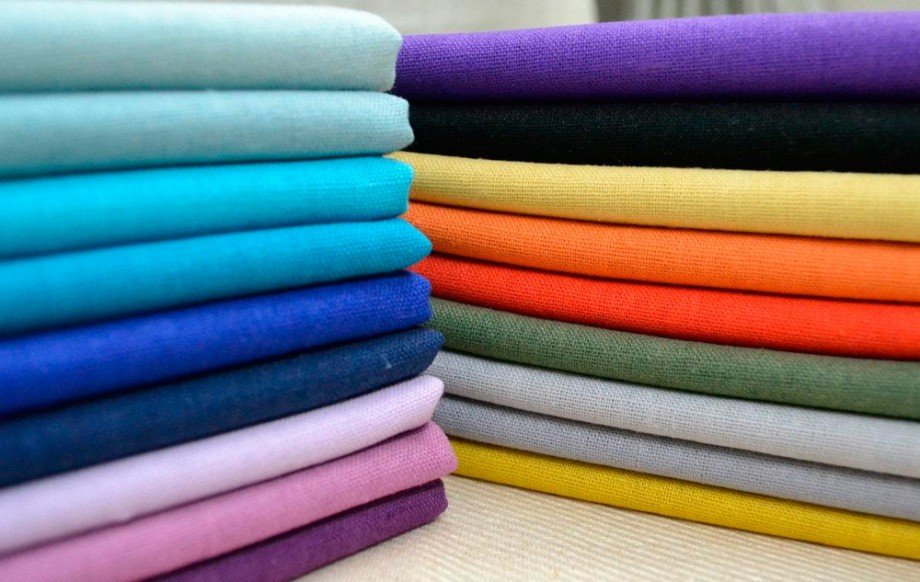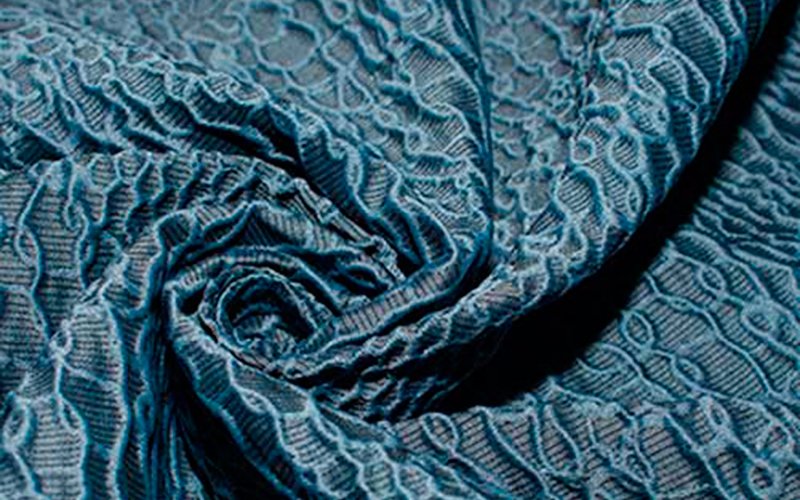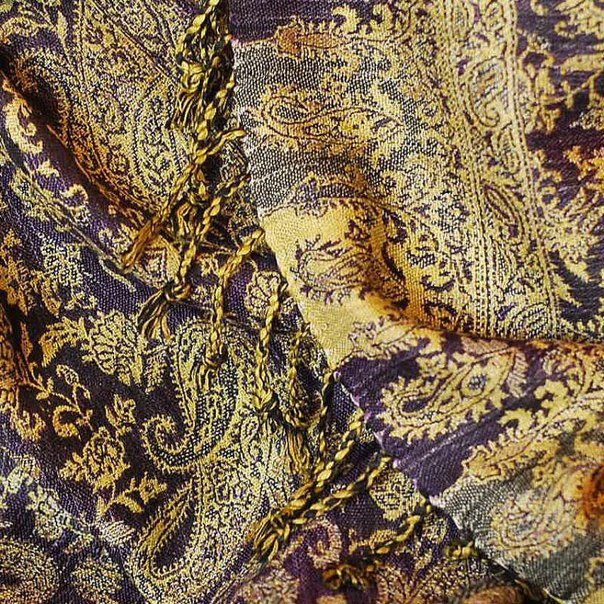Interesting facts about different types of fabric
Fabrics, textiles are products made from plant, animal and chemical fibers.
Basically, most of the textiles are used for sewing clothes and shoes, but it is also used for sewing bedding, curtains and curtains, making bedspreads and blankets, in the furniture industry and other industries.
The first textile fibers were slightly treated herbs. Bags, fishing nets, screens were weaved of them.
Later people learned to use materials such as hemp and flax fiber, as well as animal hair.
The most ancient fabric is linen. When exploring caves in the Caucasus, scientists discovered the remains of this beautiful material, the examination of which established their age – 36 thousand years.
Wool appeared four thousand years ago, and immediately became popular among the inhabitants of Ancient Babylon.
The most popular was the purple coat. This color was obtained from natural dyes – mollusks: for one gram of paint it was required to process several thousand mollusks.

CHINESE SILK FABRICS
- In ancient times, the most beautiful and unusual fabrics were Chinese – silk and with metal thread. Their ornaments are symbolic images (hieroglyphs, dragons), geometric and floral patterns.
- Back in the 3rd century BC. e. the chambers of Indian nobles of noble origin were decorated with fabrics.

MODERN PORTIERE FABRICS
- Draperies in the interior as an element of decorative design first became known in ancient Greece. These were fabric paintings framing the windows and the bed. First of all, they performed a protective function, sheltering from the sun, drafts and insects, but some attention was also paid to the aesthetic side.
- After a while, dyes for fabrics appeared and simple patterns arose – this served to increase the popularity of jewelry made of fabrics.

NONTREATED FABRIC
- A textile fabric that comes off a loom is called a fabric. This unfinished fabric, which has a pristine appearance, is called a harsh fabric or severity. Before this fabric goes on sale, it is finished with one of the processing methods.
- The choice of specific methods depends on the functional purpose of the fabric, on the properties that it needs to be given, as well as on the intended decorative effect – these days you can create truly amazing things with a roll of nondescript canvas!
- Cloth finishing is the processes of chemical (less often – mechanical) processing of fabrics. In such processes, various chemicals are used, in contrast to spinning and weaving, where the fibers are only subjected to mechanical stress.
- The finishing of the fabric in the deep sense of this concept consists in the following processes – bleaching, dyeing, printing and final operations of tissue refinement.
- In a narrower sense, finishing is just the final stage of the finishing itself, namely sizing fabrics, drying while broadening and eliminating warps on the base and weft, cutting, smoothing, decating, softening, non-shrinking finishing, etc. there are those processes that improve the appearance and quality of the fabric, increase the resistance of the fabric to various influences during their operation.

COTTON FABRIC – CHINTZ
- The most common cotton fabric is chintz. This name has changed so much that it is even difficult to immediately understand its source. The Bengalis called the mottled cotton fabric “chipe”, the Dutch remade it on a “sieve,” and we began to call it chintz.
- The fine cotton fabric of the cambric was named after the French weaver who lived in the 13th century — Francois Baptiste (according to one source) or Baptiste from Cambrai (according to others).
- Bleaching – treatment of tissues with various bleaching solutions. In this way, impurities are removed and the unwanted natural color of the fabric fibers is removed to give them a white color or to prepare for dyeing. Most often, this processing method is used for cotton and linen fabrics.

KNITTED FABRIC
- A cloth made of cotton absorbs water very well, 35 times better than a similar cloth, but made of polyester. This is because synthetics absorb water very poorly.
- Now it has become known that flax has a beneficial effect on the cure of breast cancer in women.
- Embossing – a method that improves the appearance of the fabric. The resin-impregnated fabric is passed through heated calendars with convex engraving, extruding the pattern, and then subjected to heat treatment.

FABRIC WITH CLOQUET EFFECT
- The effect of “cloquet” – the effect of the pressed surface of the fabric, is achieved by heat or alkaline treatment. Nylon yarns are woven into viscose yarns according to a specific jacquard pattern. After alkaline treatment, viscose silk shrinks and tightens nylon threads. The result is an uneven, crushed surface.
- The name “calico” came from the name of the city of Calcutta.
- Cotton fibers are used to make the footer, which are obtained from a plant called cotton. When the cotton seed box ripens, it opens and soft fibers appear inside.
- They are collected manually or on a combine, then they are cleaned of seeds at the plant, sorted by the length of the fibers, pressed and continuous fibers are obtained – yarn. The material is not woven, namely, weave, knit with looped broaches – the threads form loops that are securely fastened together, but can stretch elastically.

IRANIAN SILK
- Fine silk and woolen fabrics were made in Iran. The patterns were dominated by hunting scenes, fantastic animals, and symbols of royal power.
- In the 15th and 17th centuries, “golden fabrics” (volar), velvet and satin with floral, animal ornaments and scenes from the epic were spread.
- Elastane sellers have an excellent opportunity to “inflate” buyers exactly 7 times – this is how much highly elastic threads are stretched as much as possible.
- Duvet covers with cutouts in the middle appeared only after the Second World War. Of course, then there was no such diversity in materials, but with the development of technology this process has improved, and today we can admire the abundance of fabrics, colors and all kinds of performance of these products.
- According to legend, Napoleon brought the first pashmina shawl to Europe as a romantic gift to his wife Josephine. The woman, of course, was captivated by the tremendous tenderness of the product, and the fame of him quickly spread throughout the world.

Brocade of Ancient Russia
- In Russia, large weaving before Peter I was not widespread. Expensive high-quality gold and silk fabrics were brought from abroad or obtained as military trophies. In Kievan Rus, such fabrics were called fibers. These included silk, brocade, axamite, tin.
- A trade agreement between Russia and Byzantium on the supply of ceilings is known. These deliveries were made on the way from the Varangians to the Greeks. Such fabrics were used for the manufacture of expensive clothes, bedding and table linen, religious objects. The ceilings were very much appreciated, considered an honorable gift, they were accumulated in temples and the state treasury.

ANTIQUE VELVET
- Fabrics of purple and crimson color were especially famous. Woolen fabrics were also brought, among which the most expensive were shells (fine cloth) and carpets, they were inherited even in princely families.
- They tried to resettle the cashmere goats in England and Scotland, but their fluff lost its qualities and ceased to be suitable for the production of cashmere.

FLEECE FABRIC
- In addition, Islam prohibits the destruction of living beings for the sake of luxury, for this reason Muslims cannot produce silk.
- The most expensive fabric in the world was produced by Scabal. The canvas is a high-quality wool obtained manually. The fabric is called “Summit” and its price per meter reaches two thousand dollars.
37.The company is also the creator of one of the extraordinary fabrics in the production process of which diamond dusting is applied to its surface. Thanks to this composition, textiles can reflect light, while creating an extraordinary sheen.

FABRIC CASHMERE
- A tactile pleasure is the touch of the softest cashmere, silky velvet, rough matting, the finest veil, flowing silk.
- Progress does not stand still, textile workers come up with different types of fabrics, delighting us with a variety of textures, giving fabrics unusual qualities earlier, inventing innovative methods of processing fibers and surface finishes.

FURNITURE FABRIC
40.There are new names for materials that, sometimes, do not talk about anything to the buyer, who are more and more accustomed to simplifications.
- Wool, silk, jacquard, cotton, viscose – this is what we came to in the 21st century!
- Thanks to nano-technologies, some companies around the world are engaged in the manufacture of unique fabrics that will change color and pattern as desired by the owner.

